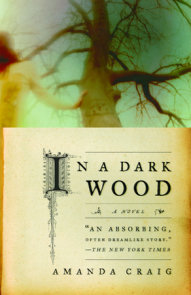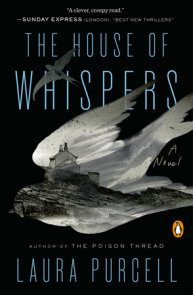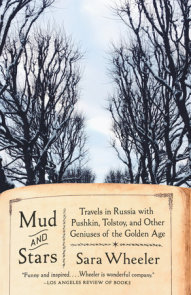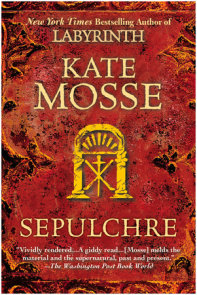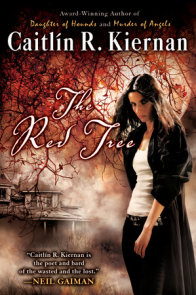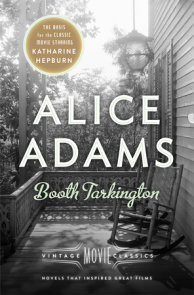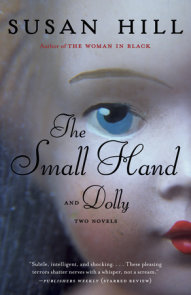READERS GUIDE
Questions and Topics for Discussion
INTRODUCTION
“I’m not going to preach. It’s too late for that, and besides which, preaching never did anybody any good anyway. Let me just say this, though, for the record—for the better part of my life I was a criminal. Just like you.”
—A Friend of the Earth
Flashing between the year 2025 and the 1990s, the novel is an account of the life of Tyrone O’Shaugnessy Tierwater, a middle-class single father who evolves into an environmental radical and ultimately sacrifices his own daughter to the Earth Movement.
The son of a successful real-estate developer who has plopped Levittown-style housing divisions and strip malls across America, Ty spends his early adulthood as the sort of man he comes to detest most—a modest suburbanite Überconsumer who daily commits unintentional outrages against the environment.
Ever since his wife died, he has been raising his pre-teen daughter, Sierra, a moody initiate in the Goth scene who largely ignores his presence. But Ty and Sierra’s lives change when he meets Andrea Cotton, the stunning spokeswoman for Earth Forever!, a media-savvy environmental-rights organization. Not long after, Ty, Andrea, Sierra, and Earth Forever! compatriot Teo Van Sparks, in an act of ecotage, plant themselves in concrete across a logging road to protest logging practices. Ty has soon earned his first set of criminal charges, but he is also declared an unfit parent and loses custody of Sierra. When he and Andrea sneak a visit to her foster home, Ty impulsively abducts his daughter, making the three of them fugitives and cementing his break with mainstream society. One Adam-and-Eve-like publicity stunt, several acts of vandalism, and a couple of prison stints later, Ty reluctantly passes the mantle of environmental activism to Sierra. Now an adult, Sierra has dedicated her life to a single colossal tree, in whose branches she spends the last three of years of her life.
Twenty-eight years later, Ty is hardly recognizable in the crusty old cynic who tends to the exotic and unlovable menagerie of ultra-rich pop star Maclovio Pulchris. He inhabits a world where everything Earth Forever! predicted has come to pass. The atmosphere’s protective layers have been stripped away and much of the Earth is bathed in heat and radiation, the variety of animal and plant life dwindles away, and humankind is besieged by a superflu while undergoing a slow cultural death. A misanthropic hermit, Ty has no need for humanity, preferring the company of the hyenas, giant Patagonian foxes, and sadsack lions that Pulchris sees as the world’s last chance to save some of its diversity.
And then Andrea comes back into his life. Asking Ty to help her with a biography of Sierra, she insinuates herself into his very home, making all that has come before the beginning of a period in which Ty has to reassess his life, ponder the Earth’s future and make one last attempt at love.
A scathing look at contemporary American society, from government and corporate malfeasance to the excesses of ordinary life, Boyle’s book also examines the societal and personal crimes that can turn a planet into a seething, dying rock and an ordinary man into a radical.
ABOUT T. C. BOYLE
A published writer for more than a quarter of a century, T. Coraghessan Boyle has written fourteen books of fiction. His stories have appeared in most major American magazines and his books have been translated into twenty-five languages. After graduating from Lakeland High School in Shrub Oak, N.Y., he studied history and English at State University of New York, Potsdam. A story in The North American Review earned him acceptance into the University of Iowa Writer’s Workshop in 1972, where he received his M.F.A. and Ph.D. in Nineteenth-Century British Literature. A professor of English at the University of Southern California since 1978, Boyle now lives near Santa Barbara with his wife and three children. His awards have included the PEN/Faulkner award for World’s End, the PEN/Malamud award for excellence in short fiction, several O. Henry awards, and the Prix Medicis étranger for The Tortilla Curtain in France, among many others. His novel The Road to Wellville was made into a movie by Alan Parker, starring Anthony Hopkins, Matthew Broderick, and Bridget Fonda.
A CONVERSATION WITH T. C. BOYLE
When you collected your stories, you categorized them in three sections: “Love,” “Death,” and “Everything in Between.” Which of these themes is strongest in A Friend of the Earth, and why did you focus on it?
I chose to categorize the stories in a rather whimsical way, in order to avoid presenting the usual sort of academic-looking volume of collected stories, arranged chronologically. Why? To emphasize that stories are not the province of the critic or academic, but rather of the audience, and that they are meant to be enjoyed, first and foremost, as stories, as acts of the imagination, as magic. As for A Friend of the Earth, I would have to assign it to all three of these invented categories: it is very much a love story, but one that deals with the death of many of the things that we, as a species, hold dear. Finally, of course, there is a whole lot that occurs in between these great demarcators of our lives—love and death, that is—and I hope I have given some of it dramatic form here.
How much did you draw on real-life events in the environmental movement, specifically Julia “Butterfly” Hill and her tree Luna? How much did you rely on groups such as ALF, ELF and the real Earth First! organization?
Julia Hill was an inspiration for me, though I should say that she climbed up into her tree some months after I began writing the book, and that I finished it before she came down. Sierra wound up staying in her tree—Artemis—longer than Julia embraced Luna, and, sadly, she came down less gracefully. Obviously, I was much influenced by the radical environmental groups, particularly Earth First! and the acts of ecotage they performed in the late eighties and early nineties, especially those surrounding the “Redwood Summer” campaign.
Why did you decide to switch between the first- and third-person narratives? What would the Ty Tierwater of 2025 and the Ty Tierwater of the 1990s have to say to each other?
The discovery I stumbled upon—that of switching between first- and third-person point-of-view while incorporating both in a single character—was a lucky accident. I began the book at Part I, in the third person, but then went back to write the Prologue in Ty’s own cranky, elderly, been-there-done-that voice. This, I think, gives a great deal more color to the third-person sections, in that the reader understands that they are being written by Ty, with all of his prejudices and attitudes intact.
Your work has long been notable for its use of animals as metaphor, plot devices, and characters. How does Friend, with its obvious emphasis on animality and humanness, fit into your development of the use of animals?
It amazes me to think that in our collective hubris, we presume to rule the animals of the earth, to use them for our own purposes, to choose to preserve one species over another, as for example, the glamorous, fang-baring Siberian tiger over the common garden slug. (Wonderfully adapted, incidentally, to ride a long trail of slime of its own making, in the way we might take a water chute in an amusement park—but slower, of course. Much slower.)
You go into great detail about Ty’s earliest actions, but when it comes to the apex, or nadir, of his career as an “ecoterrorist,” the poisoning, you leave much of the incident to the imagination. Why didn’t you dedicate more space to the incident that earned Ty the “Human Hyena” sobriquet?
In fact, I had written a chapter I later deleted from the final version. This version took Ty and Sandman to Lake Cachuma, at which point Ty decides that he is not the misanthrope and murderer the press might make him out to be and draws back from committing this terrible act. I deleted the chapter for two reasons: it slowed down the thrust of the two intertwining stories at their moment of union and it was, finally, de trop. I believe we can understand from what we have of Ty, as it stands, that he would not go to the extreme of mass murder. Of course, the very fact that he considers it raises the question of how far we might go in order to prevent the destruction of the environment and how anyone can take it on himself to play God. Think ethnic cleansing. Think Hitler and Radovan Kadzic.
Maclovio Pulchris is part Elvis, part Paul McCartney, and a lot Michael Jackson. Why did you choose a vapid pop star to act as what seems to be the world’s last best hope for avoiding complete ecological disaster?
Quite simply because these figures represent our modern gods, our pantheon, and they have taken it upon themselves to lead us to the Promised Land. In the case of Mr. Jackson, he does indeed have a menagerie of wild animals under his suzerainty. Does any human being have the right to possess the wild? And further, can any of us presume to choose what species are to be spared and what sacrificed? Do you remember Noah?
Your vision of the near future is bleak and you label your book “Fiction?” How much does Friend reflect your own prejudices and fears?
Regarding my own prejudices and fears: this book encapsulates them and writes them large. I worry about everything, from the extinction of the canyon wren (see The Tortilla Curtain) to the frying of the plankton like wontons due to the holes in the ozone layer to overpopulation and the slow starvation of one-third of the world’s population. I am depressed. I feel helpless. I’ve read our major environmental writers and none of them offers a breath of hope. What to do? Write a fiction and try to sort out my own feelings.
What are your own feelings about what is variously labeled “direct action” or “ecoterrorism,” depending on whether it’s an environmental group or a corporation doing the speaking? Did you consider delving into the issue of genetic modification as you wrote Friend?
Obviously I am very sympathetic to extreme acts against the destroyers of the environment. But at the same time I am not writing a polemic here—I am attempting to create a work of art that invites the reader in. I provoke the reader. Entertain him/her. Make them think more deeply on the issues involved, just as I attempted to do with regard to the issue of illegal immigration in The Tortilla Curtain. Consider this, however: while many of us may be sympathetic to subverting the law to protect the environment under the excuse that we are obeying a “higher law,” what of the right-to-lifers who make the very same argument in support of murdering the nurses, doctors, and patients and abortion clinics?
What other fictions did you consider when you wrote A Friend of the Earth, and how were they reflected in this work? You’ve said that Friend is the logical outgrowth of Tortilla Curtain. How did Friend pick up where Curtain left off, and what questions from Curtain did you decide to leave out in Friend?
I really had no other fictions in mind, but I do see the piece as being in the mode of Mark Twain or Jonathan Swift. As the European reviews have poured in, I see that many of them make reference to the George Orwell of 1984. I did not consider Orwell when writing A Friend of the Earth, but I suppose the comparisons are opposite in one way—we have both written of dystopias. Orwell’s very brilliant novel is politically oriented, however—it is a cautionary tale—and my book is not. As for the second part of the question: yes, I do see Friend as an outgrowth of Tortilla. While the latter novel dealt on the surface with illegal immigration in Southern California, the subtext—as many critics have noted—concerns a Darwinian struggle for existence among us and the other species of the earth, as well as an inter-species struggle as well. What good are borders or political entities in the face of a species—Homo sapiens or Canis latrans—deprived of resources?
Most of Friend takes place in the Pacific Northwest and California’s Sierra Nevada. What role does the setting play in the story, and how much of it is drawn from your life in Santa Barbara?
The setting, of course, was largely dictated by where the actual events of the environmental movement had taken place, as with the action in the Siskiyou, based on an Earth First! action. And, of course, as a Californian who indulges his love of nature by cruising the ancient Sequoia forests with birds perched on his shoulders (in the manner of St. Francis) these landscapes are very special to me. In fact, they are holy. People ask me what specifically I do to identify myself as an environmentalist, and I answer this: Quite simply, I walk in the woods. May you all have the opportunity to do the same.
DISCUSSION QUESTIONS








